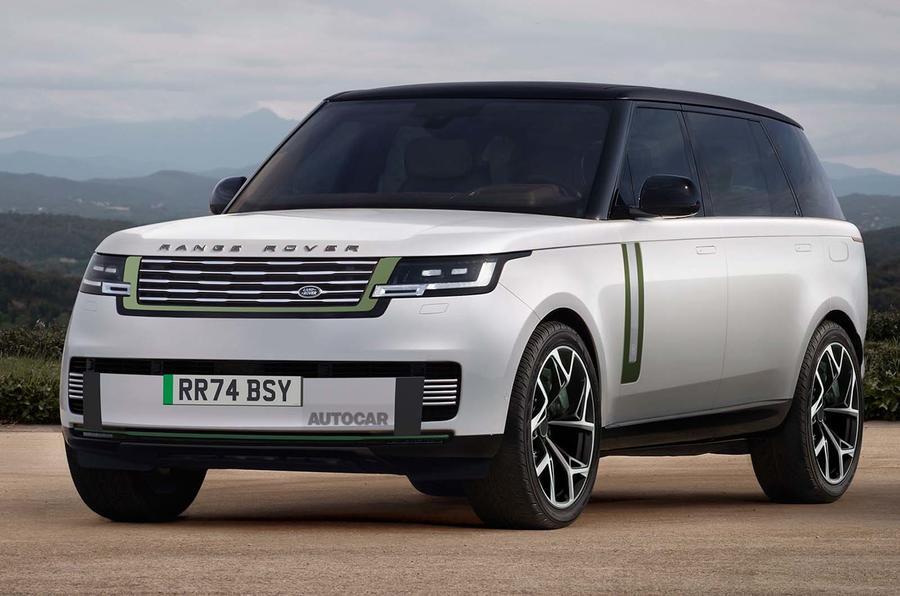Orders for the Range Rover are now closed until the 2024 model year
Range Rover and Defender models make up 75% of sales, while Evoque and Discovery Sport sales dwindle
In many minds, Jaguar Land Rover (JLR) is a premium maker to be considered alongside the leading German trio of Audi, BMW and Mercedes-Benz, but right now that’s far from the reality. In terms of affordability, it’s in a different stratosphere.
The company said on a recent earnings call that its average transaction price globally was “over £70,000” in the last three months of 2022 as it focused its attention on the three models that it said made it the most profit on: the Range Rover, Range Rover Sport and Land Rover Defender.
It’s difficult to find an average selling prices for premium brands, but Tesla declared it was around $47,000 for 2022. In 2020, Mercedes’ average selling price was €50,917, according to the International Council on Clean Transportation. That’s likely to be higher now as production constraints removed the need for discounting, but it won’t be anywhere near as high as JLR’s.
JLR has never been mass-market, but the company’s sales figures for the previous quarter laid bare just how focused it is right now on selling the big stuff. Its runaway best-seller for the quarter was the Defender at 23,816, while the Range Rover was second with wholesales (ie sales to dealers) of 16,682. JLR pointed out that it had booked more than 5000 orders of the SV version, with average pricing above £180,000. Third was the Range Rover Sport, with 11,318.
![]()
And what of its cheaper models? The Range Rover Evoque, traditionally JLR’s best-seller along with the related Land Rover Discovery Sport, dipped below 10,000 sales for only the second quarter in its history. The Land Rover Discovery Sport had its worst quarter since launch, with sales of just 6369. Range Rover Velar sales also tailed off to 5905, while those of Discovery continued to bump along the bottom, at just 1984.
Over at Jaguar, the F-Pace SUV remained its best-seller over the thee-month period, at 6230, while I-Pace sales have more than halved from the same period a year ago, at 1111. Sales of the Jaguar E-Pace have almost ground to a halt, with just 725 shifted in the quarter.
Sales of the XE and XF saloons were buoyed by JLR’s Chinese joint venture (JV), which builds them for sales within the country along with Evoque and Discovery Sport.
Almost half of the Discovery Sport’s sales came via the JV, which meant the Halewood plant that also makes the Evoque had a very relaxed three months indeed.
Together, the big three SUVs accounted for 64% of all JLR’s sales in the three months to the end of December, rising to a full three quarters minus JLR’s Chinese JV sales.
Production constraints are the big reason for the focus on the three big SUVs. As computer chips remain hard to get hold of, JLR has been throwing resources at the big-ticket models, and it has finally paid off, with its first quarterly profit since 2020.
![]()
JLR’s outsized order book of 215,000 vehicles is 74% Range Rover, Range Rover Sport and Defender, the company said. In fact, orders for the Range Rover are now closed until the 2024 model year, such is the company’s production backlog.
There’s little sign that JLR is going to start prioritising production of other models any time soon.
“The Range Rover, Range Rover Sport and the MLA architecture [they’re based on] are fundamental to our business model and our business success,” acting CEO Adrian Mardell said on the company’s earnings call on Wednesday.
Such is the demand for those models in its big markets of the US and China that they will remain the company’s focus for the foreseeable, despite indicating that the chip crisis is easing.
Land Rover has even gone to three shifts for the Defender at its Slovakian plant, increasing deliveries for that model and reducing its forward order book.
Range Rover and Range Rover Sport sales will climb about 10% in the three months to the end of March, according to Mardell.
“Next year, we still believe we will still be talking about higher than ideal order banks,” he said said of the financial year starting on 1 April.

Future launches aren’t about to bring the average selling price down any time soon. The next model out of the gate is the electric Range Rover in 2024, which is expected to cost well over £100,000. The first of the new Jaguar EVs are on track for 2025, Mardell said, but will target a price bracket that’s more Range Rover than Evoque. Subsequent electric launches including Defender and “other Range Rovers” will come within two years of the electric Range Rover, Mardell said.
JLR isn’t specifically halting orders on lower priced models, according to its websites, but it does warn about lengthier delivery times due to the shortage of chips. The company also tamps down demand by cutting marketing around the products, including not offering discounts or other incentives.
The situation won’t last forever, Mardell said. JLR’s “normal” is about 40,000 sales per month, compared with around 27,000 today. However, the focus in the near term will remain on the three most expensive models: the Range Rover, Range Rover Sport and Defender.
“With this level of order intake, and the bias to those products, and the instability within production and supply pipelines, we will continue to be very very low [on marketing expenses],” Mardell said. “There will be a point in time when that starts to lift, but we’re not seeing any sign of that within the data we see today.”
Source: Autocar